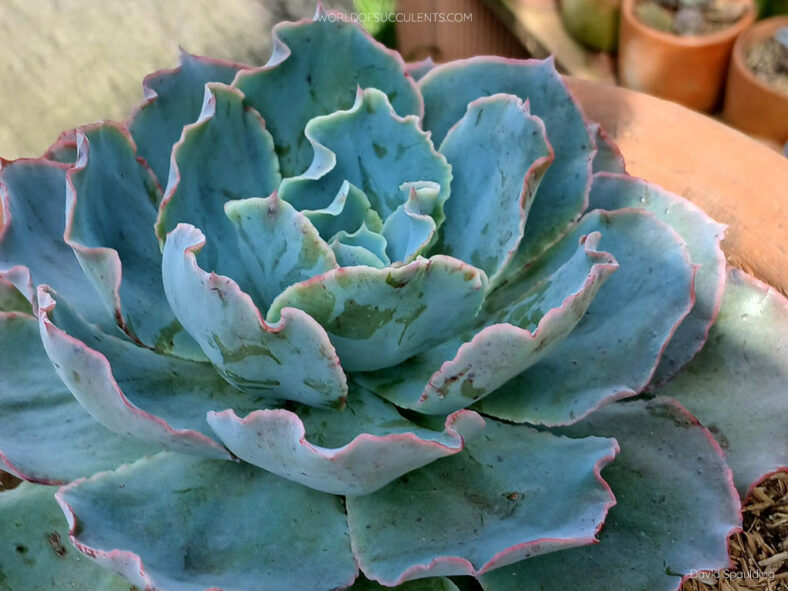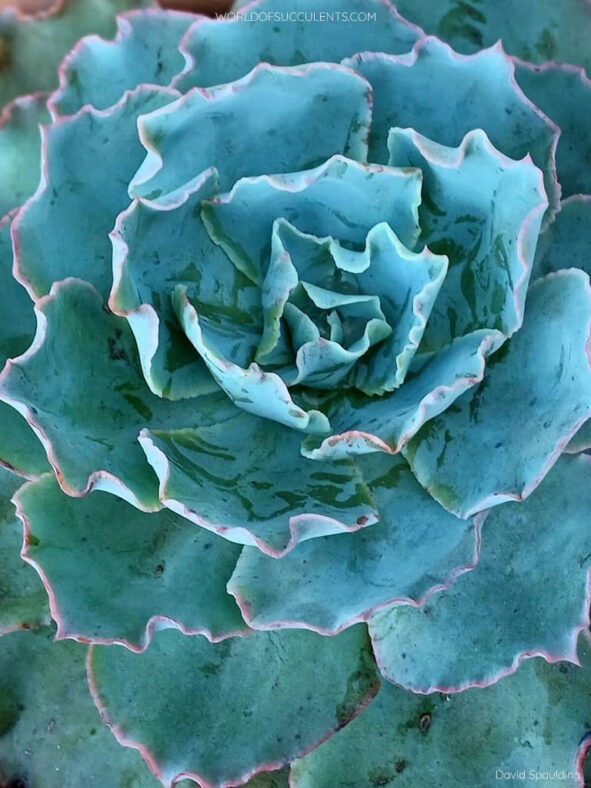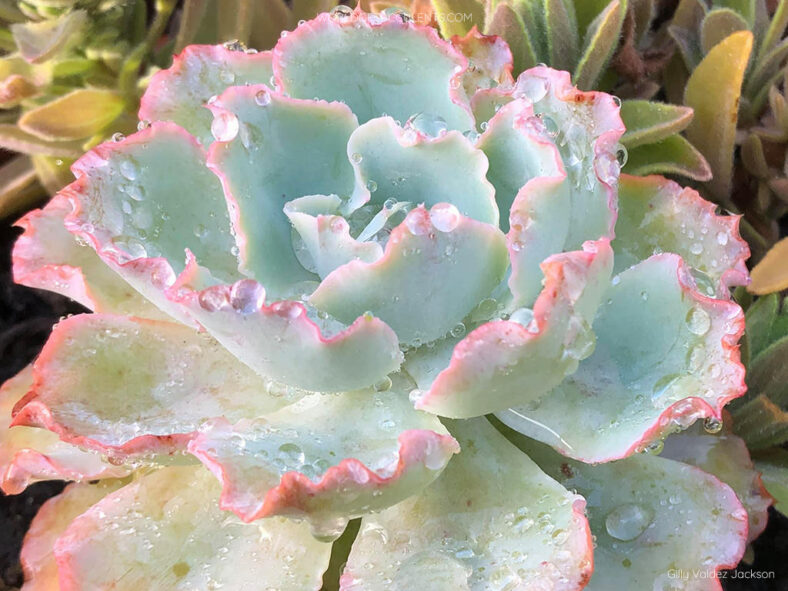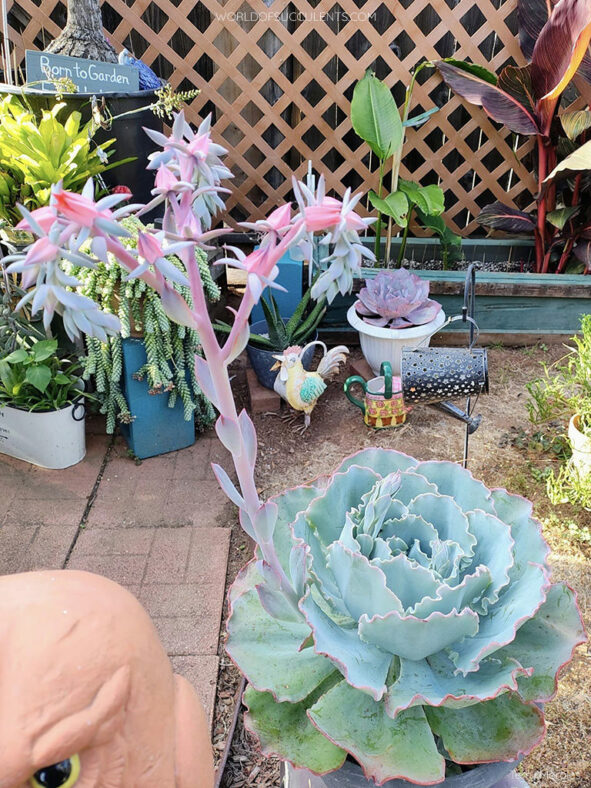Unlike other Echeverias, this unique hybrid can withstand environmental stress and adapt to various climate conditions. Echeveria 'Sahara' also shows improved resistance to diseases and powdery mildew.
Scientific Name
Echeveria 'Sahara'
Scientific Classification
Family: Crassulaceae
Subfamily: Sempervivoideae
Tribe: Sedeae
Genus: Echeveria
Origin
Echeveria 'Sahara' is a hybrid created by Renee O'Connell from a cross made in March 2010 at a commercial greenhouse in Vista, California, United States. It was discovered and selected by the inventor in 2011 and subsequently patented (PP27514) by Altman Plants in 2016.
Description
Echeveria 'Sahara' is a beautiful succulent that forms attractive rosettes of inversely ovoid leaves with a pointed tip and slightly wavy edges. It has robust growth and is offset profusely, quickly creating a dense clump. The rosettes can reach a diameter of 9.2 inches (23 cm), while the leaves can grow up to 5.2 inches (13 cm) long and 3.4 inches (8.5 cm) wide. The leaves are bluish-green with pink margins and tips. They are covered with a fine waxy bloom that rubs off when touched.
During spring and fall, Echeveria 'Sahara' produces bell-shaped, coral-colored flowers on stalks that can reach a height of 24 inches (60 cm).

How to Grow and Care for Echeveria 'Sahara'
Light: Echeveria 'Sahara' requires full sun to partial shade for optimal growth. Therefore, place it near the brightest window in your home. In addition, if you are moving the plant outside in spring, do it gradually and avoid exposure to intense afternoon sun.
Soil: Having soil that drains quickly is most important for growing a healthy succulent. While many growers prefer to create their own soil mix, commercial soil mixes for succulents will work fine.
Temperature: High temperatures are not a problem as long as there is plenty of fresh air, but Echeveria 'Sahara' is a tender succulent and must be brought indoors if there is a risk of freezing temperatures. It grows best in USDA Plant Hardiness Zones 10a to 11b, with average minimum winter temperatures ranging from 30 to 50 °F (-1.1 to 10 °C).
Watering: This plant prefers the "soak and dry" method during the growing season. Water deeply and then let the soil completely dry out before watering again. Water sparingly during the winter, only enough to keep the plant from shriveling. Above all, if you have a saucer under the pot, do not forget to empty the excess water.
Fertilizing: Although it can grow well without fertilizer, Echeveria 'Sahara' may benefit from extra nutrients. Feed only during the growing season and use a water-soluble fertilizer diluted to half the recommended strength.
Repotting: If growing it in a container, repot as needed in spring or early summer, but ensure the soil is dry before you start. Also, always use a container with drainage holes.
Propagation: Echeveria 'Sahara' can be propagated by leaves or offsets during the growing season.
Learn more at How to Grow and Care for Echeveria.
Toxicity of Echeveria 'Sahara'
Echeveria 'Sahara' has no reported toxic effects and is safe for growing around children and pets.
Links
- Back to genus Echeveria
- Succupedia: Browse succulents by Scientific Name, Common Name, Genus, Family, USDA Hardiness Zone, Origin, or cacti by Genus
Photo Gallery
Click on a photo to see a larger version.


